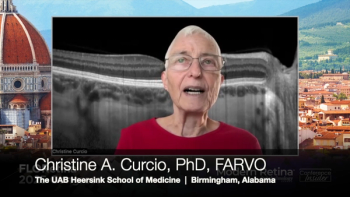
Classification of vitreous detachment guides surgical procedure
The surgical approach chosen by Borja Corcóstegui, MD, to repair vitreous detachments is driven by the classification of the detachment.
The surgical approach chosen by Borja Corcóstegui, MD, to repair vitreous detachments is driven by the classification of the detachment. In addition, use of anti-vascular endothelial growth factor (VEGF) and small-gauge instruments can be useful in vitreous detachment repair, said Dr. Corcóstegui, of the University of Barcelona, Spain.
The classification of the vitreous detachments that he uses ranges from Type 0 to Type 5:
Type 0, characterized by complete posterior vitreous detachment (PVD).
Type 1, characterized by one or more focal vitreoretinal attachments typically at the optic disc.
Type 2, characterized by broad vitreoretinal attachments, with attachments larger than 1 disc area in size and the presence or absence of underlying traction with an associated complication rate.
Type 3, characterized by vitreous attachment at the disc along the arcades and over the macula with surgical complication rates up to 7%.
Type 4, characterized by vitreous attachment from the disc and major vascular arcades out to the extreme periphery, vitreous detached only over the macula and surgical complications up to 8% to 10%.
Type 5, characterized by the absence of PVD with surgical complication rates of from 12% to 15%.
Grades 0, 1, 2, and 3 can be addressed with small-gauge instruments (23- or 25-gauge) and grades 4 and 5 with 20-gauge instruments. When operating on the eyes of patients with grades 2 to 5 vitreous detachments, 0.05 ml of either bevacizumab (Avastin, Genentech) or ranicizumab (Lucentis, Genentech) is injected 2 to 7 days preoperatively to decrease the proliferation of new vessels and shrink the collagen tissue.
Dr. Corcóstegui said he prefers 23-gauge instrumentation because he can operate through a small port and there is higher efficacy when cutting membranes.
"Recognizing the degree of vitreoretinal attachment can be useful and can help estimate the complicate rate," he said. "Anti-VEGF drugs are helpful to the surgical technique as well as small-gauge instrumentation."
Newsletter
Get the essential updates shaping the future of pharma manufacturing and compliance—subscribe today to Pharmaceutical Technology and never miss a breakthrough.







































